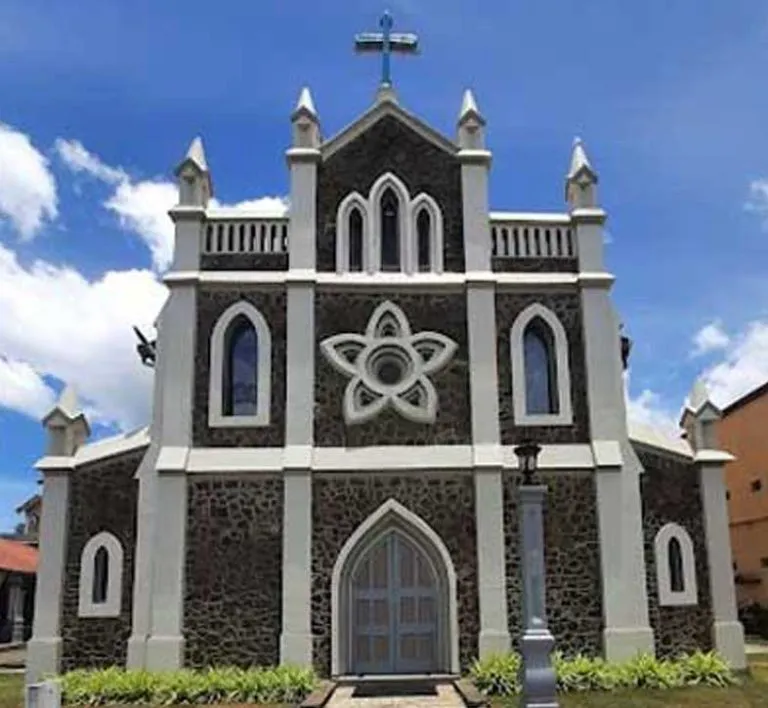
Introduction
The Shrine of Our Lady of Matara is located on the Southern tip of Sri Lanka. The original shrine was the Church of Our Lady of Mahature as Matara was once known. For the past one hundred years, the Miraculous Statue of Our Lady of Matara has rested at St. Mary’s Church Matara. Today, this church stands as a beacon of light to visitors and pilgrims.
According to the story that has been passed down through generations, a huge wooden crate was pulled up by fishermen off the coast of Weligama, near Matara early in the 17th century. When the crate was opened, the statue was found inside untouched by the sea water. The fishermen handed over the statue to the Parish Priest and then placed in the original church of Matara. This was the first time that Statue returned from the sea. Sometime after, the statue had to be hidden due to the religious sanctions imposed by the Dutch, but again it returned to Matara.
Later a cholera epidemic swept through the entire southern district and claimed hundreds of lives. The people of Matara rallied around the statue and prayed for an end to the epidemic. The statue was taken in a solemn procession through the streets of Matara. People of all religions participated. After a few days the area was declared safe by the health authorities. There were no fresh cases and no further deaths. Since then the people has viewed the statue as miraculous.
In the early 1990’s, the First Bishop of Galle, Rt. Rev. Dr. Joseph Van Reith, a Belgian had the statue send to Europe to be restored by a famous sculptor Zeus of Gehent. After restoration, the sculptor placed the statue on the ship “Beachy” to be sent to Matara. The ship was caught in a storm in the North Sea and nearly wrecked. Most of the cargo was destroyed or thrown overboard. The ship made it to Middles borough before continuing on to Colombo, but not before yet another rough path at sea on part of the remaining cargo was also thrown overboard.
Finally, the ship arrived in Colombo without the statue. The Bishop of Galle wrote to friends in Belgium to try to retrieve the priceless item. The statue was traced to a man in Middles borough, who demanded money in exchange for the sculptor. When the sum was refused, he damaged the face of the statue and threw it away. The figure was recovered and returned once again to Zeus for repair. The sculptor spends a great amount of energy and time restoring it to its original beauty.
History of Shrine of Our Lady of Matara
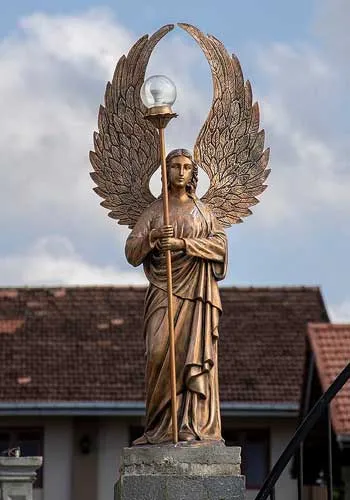
Located on the Indian Ocean, this shrine to Our Lady dates from sometime in the 18th Century. Little is known about the actual date, but the story goes that some fishermen found a large crate that was floating on the sea. Upon opening the crate they found a statue of the Blessed Virgin Mary dry and un-damaged.
The statue is carved from a single piece of wood (ash), and patterned after Portuguese statues of the 17th Century.
Shrine of Our Lady of Matara is a Roman Catholic church devoted to the Virgin Mary, in the town of Matara, Sri Lanka. The shrine houses a statue of the Virgin Mary holding the infant Jesus. Though the statue’s origins are unknown, church officials claim that it is 400 years old. The statue has been damaged, lost and recovered more than once, most recently during the 2004 tsunami in Asia, which damaged the shrine and killed 24 people attending Sunday Mass. The church celebrated its centenary year in 2007.
The Statue is eighteen inches in height and is of the Madonna and Child. Mary is standing with the Child Jesus upon a pedestal featuring three ocean waves. Three times the Statue of Our Lady has been taken by the sea and each time She returned to Matara. The last time was as a result of the Tsunami. The statue was found three days later.
The statue belongs to the Portuguese type of sculpture of the early 17th century. It is a mystery as to who brought the statue to Sri Lanka, but we are aware that it was in Sri Lanka when the Portuguese occupied the area almost 400 years ago.
The Miraculous Statue (Our Lady of Matara)
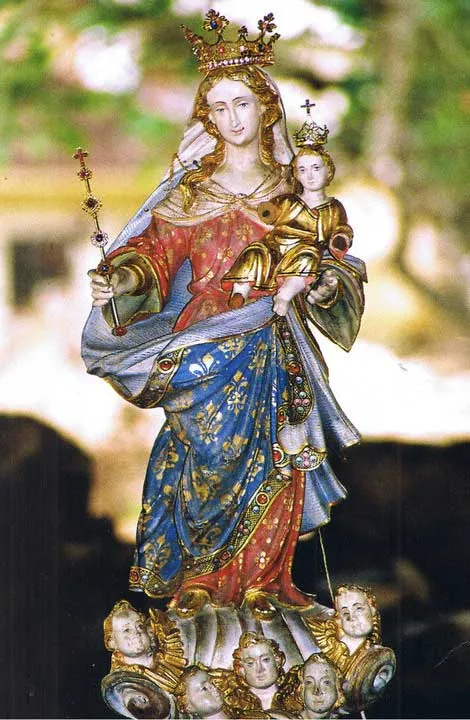
According to the story passed down through generations, a huge wooden crate was pulled up by fishermen off the coast of Weligama, near Matara early in the 17th century and the statue was found inside, untouched by the sea water. The fishermen handed over the statue to the Parish Priest, which was then placed in the original church of Matara. This was the first time that the Statue returned from the sea. Sometime later, the statue had to be hidden due to the religious sanctions imposed by the Dutch, but again it returned to Matara.
Mystery
This statue has a story intertwined with the sea. Legend tells us that a huge wooden-crate was hauled out of the sea by some fishermen of Weligama, a town between Galle and Matara in Sri Lanka. When it was opened, this beautiful statue of the Mother and child was found inside, untouched by the sea water. They handed it over to the Parish Priest of Matara and it was subsequently placed in St. Mary’s Church, Matara. The statue has come on its own, over the waves and given itself to the care of the Catholics of Ruhunu Rata which is the down south of Sri-Lanka.
Cholera Epidemic
It gained its miraculous nature through an incident which occurred few years later. At a later period during a cholera epidemic which raged through the District and claimed hundreds of lives, the Catholics rallied round this statue and prayed to be delivered from the terrible disease.
The statue was taken in a solemn procession through the streets of Matara. Even non-Catholics participated in this procession. After a few days the area was declared safe by the health authorities. There were no fresh cases and no further deaths reported.
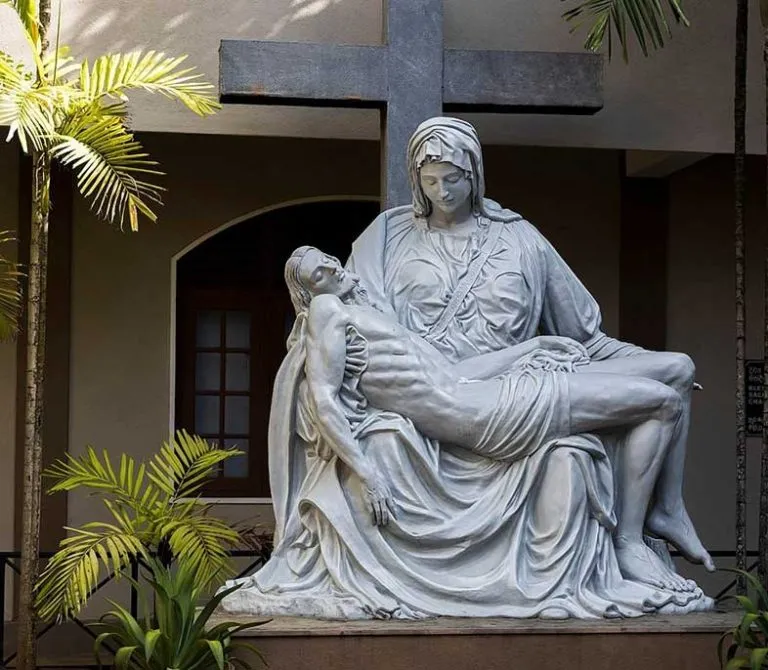
Renovations, Loss and Recovery
When the renovations were complete, the statue was packed in a wooden crate and shipped in the cargo boat Beachy, which set sail from Antwerp. The ship was caught in a fierce storm in the North Sea. It was nearly wrecked but did manage to reach Middlesbrough, England, the next morning. Most of the cargo was found to have been destroyed or thrown overboard. When the ship reached Minicoy, India, it was discovered that the statue had gone missing.
An investigation was initiated by the Bishop of Galle and Belgian priests in the Galle Diocese. These investigations traced the statue to a man in Middlesbrough. When confronted, he refused to hand over the statue unless his demands for money were met. When these demands were refused, he used a hammer to deface the statue, and then threw it away. The statue was recovered and sent back to the restorer in Ghent, who made repairs and repainted it.
The Bishop of Galle Rev. Dr. Joseph Van Reeth, took possession of the statue and set sail to Matara in the steamer Princess Alice. When he reached Colombo and looked for his luggage, the crate containing the statue could not be found.
Three days later a Belgian cargo boat named the Uckermarck arrived in Colombo with the missing crate. The excess luggage of the Princess Alice had been loaded onto the Uckermarck, which set sail after the Princess Alice had left Antwerp harbor.
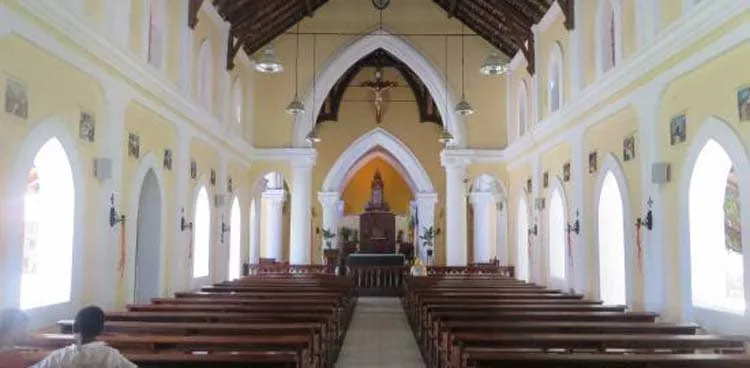
Claims regarding The Statue of Mary
Church legend claims that a large wooden crate was hauled out of the sea by Weligama fishermen. When it was opened, the statue was found inside, untouched by seawater. The fishermen handed it over to the parish priest and the statue was placed in St. Mary’s Church in Matara.
At a later period, during a cholera epidemic which claimed hundreds of lives, Catholics prayed before the statue to be delivered from the disease. The statue was taken in a solemn procession through the streets of Matara. After a few days, the area was declared safe by the health authorities and there were no further officially reported deaths. Since then the Catholics of Matara have attributed miraculous powers to the intercession of the Blessed Virgin Mary.
In the early 1900s, after over 300 years in the church of Matara, the statue looked faded and worn due to exposure and the thousands of devotees touching and kissing it. Arrangements were made with a sculptor in Ghent, Belgium, to renovate the statue.
Feast Day – 8th September
National Shrine of Our Lady of Matara, Annual Feast on 8th September. Up to 50,000 people visit the Shrine on the Feast Day not only Catholics but other faiths as well.
The Holy Hour followed by the Eucharistic procession and Benediction will be held on September 8 at 4.30 pm. On September 9 at 3.30 pm His Lordship Most Rev. Dr Justin Gnanapragasan the Bishop of the Diocese of Jaffna together with the Bishop of Galle will be welcomed. September 10 is the Feast Day. Holy Masses will be held at 4 am, 5 am and 6 am. The Festive High will be at 8 am.
Masses will be held at 11.30 am, 4 pm and 6 pm for late comers. Thousands of Catholics and non Catholics are expected to gather at the feet of Our Heavenly Mother, seeking her intercession in all their needs and celebrate her birthday.
On September 9, a special train will be in operation from Chilaw (Bangadeniya to Matara). On September 10, a special train will be in operation from Matara to Chilaw (Matara to Bangadeniya).
Mass Time
Weekdays
Tuesdays
First Fridays
Sundays
Church Visiting Time
Contact Info
The Shrine of Our Lady of Matara,
Beach Road, Matara,
Sri Lanka – 81000
Phone No.
Tel : +94 412 222 056
Accommodations
How to reach the Shrine
Bandaranaike International Airport in a suburb of Negombo, Colombo, Sri Lanka is the nearby airport to the Shrine.
Matara Railway Station in Matara, Sri Lanka is the nearby Train Station to the Shrine.








